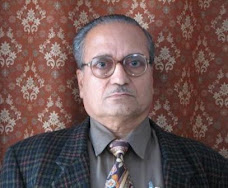Most worrying aspects of curriculum implementations:
1. Faculty Lack in both interests & requisite skills of analyzing the allocated course in the context of the whole curriculum & relevance content in the light of job requirements.
2. Over emphasis on the lecture method with chalk/ white board and ignoring the importance of using a variety of methods / techniques to attract students to attend classes.
3. Faculty & management demonstrate lukewarm attitude in using OHP with scroll and Power point presentations to enrich teaching with a lot of graphics / pictures & video clips.
4. Traditional pattern of setting exam papers using essay type of long questions. Faculty as examiners do not give due importance to use of graphics even in descriptive technology courses either for teaching or testing the extent of learning both in internal & external test papers.
5. Underutilizing the experiential learning opportunities available in the Labs / workshops, project work and industrial exposure.
6. Lack of interests and understanding of formative / continuous assessment of students’ performance in term-work.
Curriculum Implementation
For effective implementation of curriculum of any professional program it is necessary to realize the importance of performing systematic planning for implementation.
My well tried approach requires that the management of the institute should orient and motivate the faculty members for doing proper & systematic planning considering maximum criteria which directly or indirectly influence the quality of services provided to the customers. Quality to customers can easily be analyzed by comprehending the requirements of the customers and the indicators for showing extent of satisfaction felt by the customers. Thus the curriculum implementation should be planned in terms doing four types of planning: 1. 'Tactical Unit planning', ' Strategic Course Planning', 'Effective Session Planning' and 'Efficient Resources Planning'.
1. Tactical Unit Planning: It is done for allocating the most costly resource< "TIME or number of Sessions" > to be allocated to teach theoretical concepts / principles within a selected unit of a selected course. The required time can be estimated can be estimated by considering the three most influential factors: the trends of the external / University examinations papers, the relation ship between employability skills-set vis-a-vis subject matter or course content and the judgment of the faculty member on the bases of importance of the content required to improve the profession's fundamental learning and or improving professionalism to improve employability. This simple logic of giving more time & exerting more effort to more important unit ensures wonderful outcomes for the students.
2. Strategic Course Planning: After knowing the number of sessions required for a selected unit, the topics are distributed to different sessions appearing in a sequence in a tabular form. the suggested columns of the Course Plan are: Unit & Session number code (IV-3), Topic, Method, Media, Dates- Planned, Implemented and Remedial etc. this tabular planning ensures maintenance of the all academic & administrative records which are required to provided to the management or HODs. The selecting of relevant and suitable method & media of instruction is highly important activity which also satisfies the needs of minds of human learners for a variety of methods & media in order to sustain motivation & interest in learning.
3. Effective Session Planning: At the professional education/ training level it is not necessary to comprehensively plan 100% sessions. However 8 to 10 sample session planning can help your mind to decode the academic needs & approaches to meet these needs using strategic and Tactical plans prepared above. Here you plan & prepare sample resources for selected methods & media to execute teaching - learning processes.
4. Effective Resource Planning: this helps in identifying the cost effective / efficient human & physical resources such as OHPs, LCD Projectors, transparencies, Point Presentations etc. You need to arrange for equipment in class rooms and labs and also prepare matching software for displaying the content in front of the students.
If you need more details any of the above mentioned ideas please contact the author: Prof S K Soni at satishksoni@hotmail.com, satishksoni@gmail.com,
Subscribe to:
Post Comments (Atom)

No comments:
Post a Comment